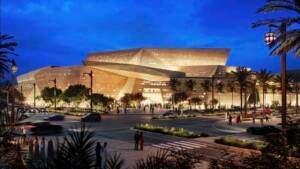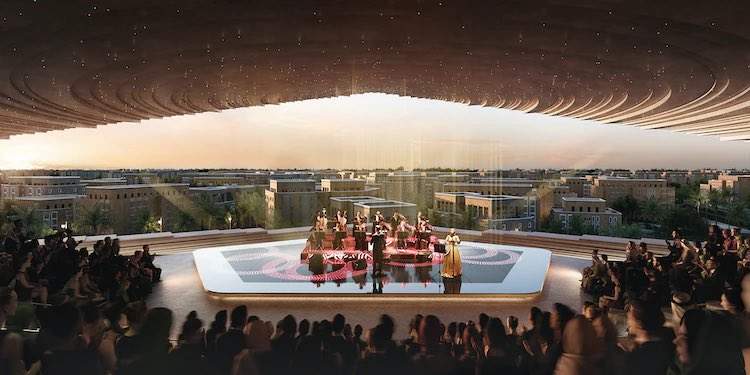The Royal Opera House in Diriyah: blending architecture with Najdi heritage
the introduction:
In the heart of Diriyah, a city rich in heritage and history in the Kingdom of Saudi Arabia, an innovative and unique project is emerging: the Royal Opera House. This monumental project, designed by the famous Norwegian architectural firm Snøhetta, represents not only an architectural masterpiece but also the embodiment of harmony between modernity and heritage.
Najdi-inspired design:
The architectural design of the Opera House reflects deep inspiration from the unique Najdi style, while maintaining a modern touch in harmony with modern architectural concepts. This design expresses Snøhetta’s commitment to valuing local heritage and incorporating it in ways that enhance the region’s cultural identity.

A space that reflects greatness and creativity:
The Royal Opera House covers an area of 46,000 square metres, providing enough space to accommodate a variety of events and activities. With its capacity to accommodate approximately 3,500 people across four different theatres, the Opera House offers a rich and multi-dimensional artistic and cultural experience.
Various theaters for unique experiences:
The project includes a main opera theater with a capacity of 2,000 seats, making it ideal for major performances and important cultural events. The secondary theater and multi-purpose theatre, both with a seating capacity of 450, provide flexibility for smaller events and interactive programmes. In addition, the 450-seat shaded rooftop theater offers a unique opportunity for outdoor performances.

Multi-use facilities:
The project also includes various facilities ranging from a visitor services pavilion, a café, and retail spaces, ensuring a rich and integrated experience for visitors.
Expected opening:
With its opening scheduled for 2028, the Royal Opera House in Diriyah is expected to become a prominent cultural and artistic landmark, enhancing the Kingdom’s position as a destination for arts and culture globally.

Inspired by nature and local culture:
Snøhetta’s design for the new opera house reflects a considered response to the region’s indigenous architecture, taking into account local crafts and the surrounding landscape, such as the valley’s dry valleys. The concept is based on the idea that soil that cracks when exposed to the hot sun, and is shaped by wind and rain, finds a new form as separate forms.
Salmaniya architecture as a source of inspiration:
While the design embraces the values of Najdi cultural identity, it also does not explore the Salmanian style, which has become distinctive in the Riyadh region. This is evident in the choice of natural materials for the building mass, which includes a mixture of palm, stone and soil, reflecting the design’s commitment to honoring the cultural and natural heritage of the region.
Architectural and craft exploration:
Inspired by the straight lines of the region’s geometric shapes, its history and its crafts, Snøhetta explored patterns in a variety of materials, resulting in distinctive textures that offer a new perspective on traditional shapes. This approach represents a harmonious blend between traditional architecture and modern innovations.


 العربية
العربية